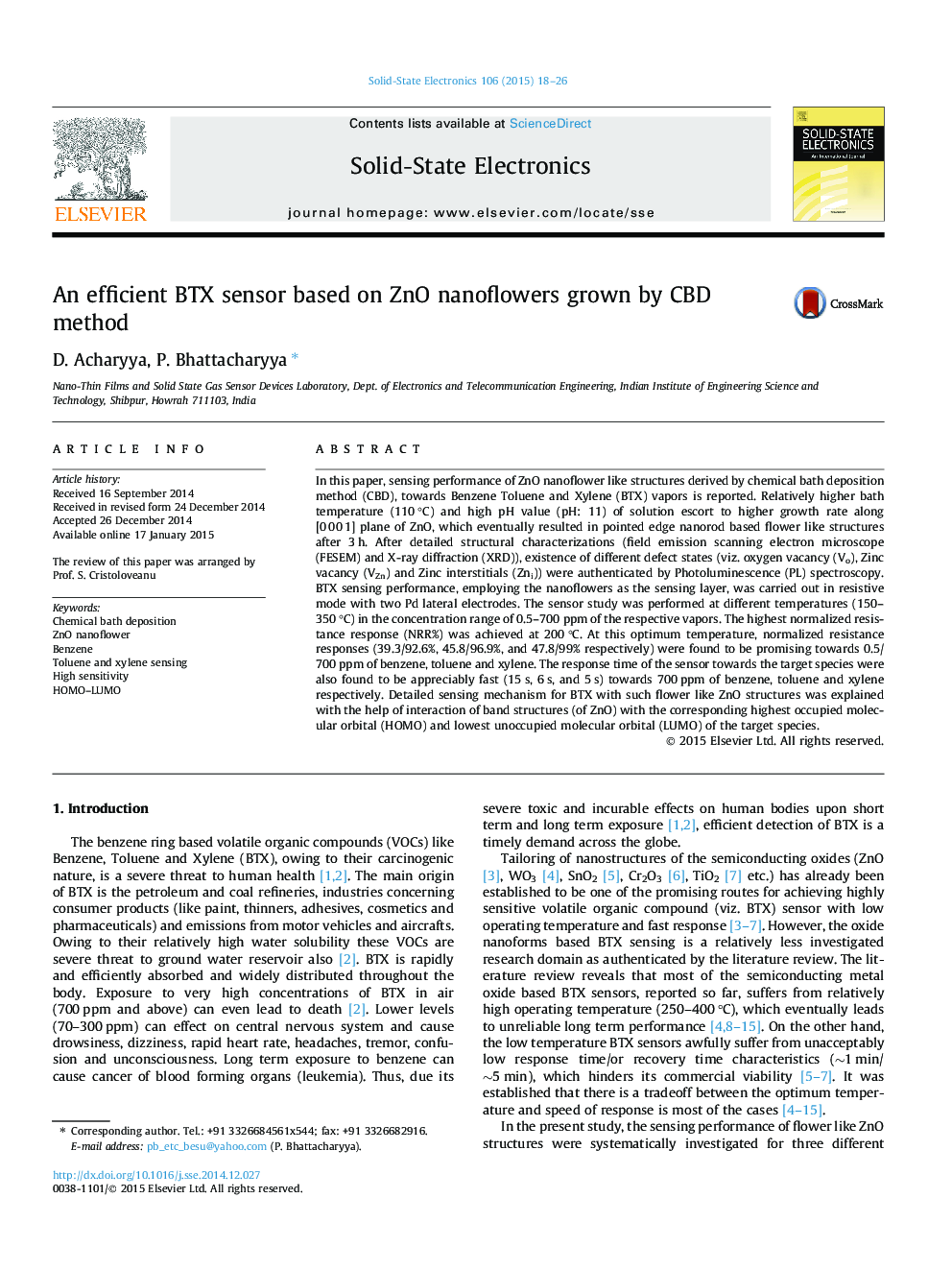| کد مقاله | کد نشریه | سال انتشار | مقاله انگلیسی | نسخه تمام متن |
|---|---|---|---|---|
| 746478 | 1462226 | 2015 | 9 صفحه PDF | دانلود رایگان |

• CBD grown ZnO nanoflower based benzene toluene and xylene sensor is developed.
• Structural characterizations authenticated existence of different defect states.
• The sensor study was performed at 150–350 °C for detecting 0.5–700 ppm BTX.
• The highest normalized resistance response (NRR%) was achieved at 200 °C.
• Detailed sensing mechanism based on HOMO and LUMO has been discussed.
In this paper, sensing performance of ZnO nanoflower like structures derived by chemical bath deposition method (CBD), towards Benzene Toluene and Xylene (BTX) vapors is reported. Relatively higher bath temperature (110 °C) and high pH value (pH: 11) of solution escort to higher growth rate along [0 0 0 1] plane of ZnO, which eventually resulted in pointed edge nanorod based flower like structures after 3 h. After detailed structural characterizations (field emission scanning electron microscope (FESEM) and X-ray diffraction (XRD)), existence of different defect states (viz. oxygen vacancy (Vo), Zinc vacancy (VZn) and Zinc interstitials (Zni)) were authenticated by Photoluminescence (PL) spectroscopy. BTX sensing performance, employing the nanoflowers as the sensing layer, was carried out in resistive mode with two Pd lateral electrodes. The sensor study was performed at different temperatures (150–350 °C) in the concentration range of 0.5–700 ppm of the respective vapors. The highest normalized resistance response (NRR%) was achieved at 200 °C. At this optimum temperature, normalized resistance responses (39.3/92.6%, 45.8/96.9%, and 47.8/99% respectively) were found to be promising towards 0.5/700 ppm of benzene, toluene and xylene. The response time of the sensor towards the target species were also found to be appreciably fast (15 s, 6 s, and 5 s) towards 700 ppm of benzene, toluene and xylene respectively. Detailed sensing mechanism for BTX with such flower like ZnO structures was explained with the help of interaction of band structures (of ZnO) with the corresponding highest occupied molecular orbital (HOMO) and lowest unoccupied molecular orbital (LUMO) of the target species.
Figure optionsDownload as PowerPoint slide
Journal: Solid-State Electronics - Volume 106, April 2015, Pages 18–26